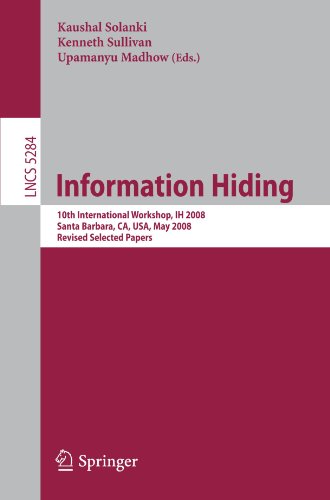

Most ebook files are in PDF format, so you can easily read them using various software such as Foxit Reader or directly on the Google Chrome browser.
Some ebook files are released by publishers in other formats such as .awz, .mobi, .epub, .fb2, etc. You may need to install specific software to read these formats on mobile/PC, such as Calibre.
Please read the tutorial at this link: https://ebookbell.com/faq
We offer FREE conversion to the popular formats you request; however, this may take some time. Therefore, right after payment, please email us, and we will try to provide the service as quickly as possible.
For some exceptional file formats or broken links (if any), please refrain from opening any disputes. Instead, email us first, and we will try to assist within a maximum of 6 hours.
EbookBell Team

0.0
0 reviews
ISBN 10: 3540889604
ISBN 13: 9783540889601
Author: Kaushal Solanki, Kenneth Sullivan, Upamanyu Madhow
th It is our great pleasure to present this volume of the proceedings of the 10 edition of Information Hiding (IH 2008). The conference was held in Santa Barbara - the Ame- can Riviera, California, USA, during May 19–21, 2008. It was organized by three Santa Barbarans on fire, from both industry (Mayachitra) and academia (UCSB). Over the years, Information Hiding (IH) has established itself as a premier forum for presenting research covering various aspects of information hiding. Continuing the tradition, this year, we provide a balanced program including topics such as anonymity and privacy, forensics, steganography, watermarking, fingerprinting, other hiding domains, and novel applications. We received a total of 64 papers from all over the globe, and would like to take this opportunity to thank all the authors who submitted their paper to IH 2008 and thus contributed to the consolidation of the reputation of the conference. The papers were refereed by at least three revi- ers who provided detailed comments, which was followed by discussion amongst the Program Committee members. Only 25 papers were selected for presentation. This rigorous review process will certainly strengthen Information Hiding’s po- tion as the top forum of our community.
hiding routing information
information hiding in object oriented programming
conceal information meaning
hidden information marketplace facebook
acm workshop on information hiding and multimedia security
methods used for hiding information inside a picture
Tags: Kaushal Solanki, Kenneth Sullivan, Upamanyu Madhow, Information, International